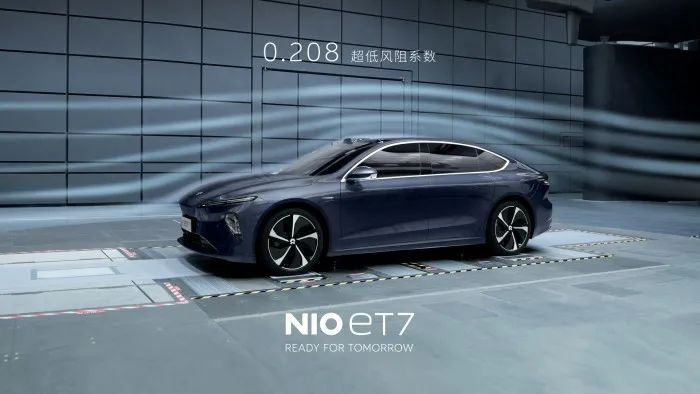The Importance of Aerodynamic Coefficient in the Automotive Industry
As the entire industry moves towards electrification, the importance of aerodynamic coefficient in vehicle body data is increasing rapidly. Early cars were boxy, and the backwardness of body shaping technology severely limited the pursuit of drag coefficient. Later, with the development of racing sports, the drag coefficient became an indicator that car companies attach great importance to.
In the field of electric vehicles, the drag coefficient is particularly important, mainly due to “range anxiety”. There are many factors that affect the range of electric vehicles, such as motor power consumption, tire rolling resistance, overall vehicle weight, etc. However, according to the output characteristics of electric vehicle motors, high-speed cruising is the weakest scenario for electric vehicle range, while the drag coefficient is a factor that can significantly improve high-speed range capability, so its importance is self-evident.
What has NIO done on ET7?
In the product definition and early styling selection stage, the aerodynamics team participated deeply in the styling design, and optimized the inclination angle of the front windshield, the turn angle of the headlight bezel, the inclination angle of the slick back streamline, the shoulder line characteristics of the C-pillar, approach angle, departure angle, wheel rim, etc. while meeting the human-machine engineering and riding comfort requirements.
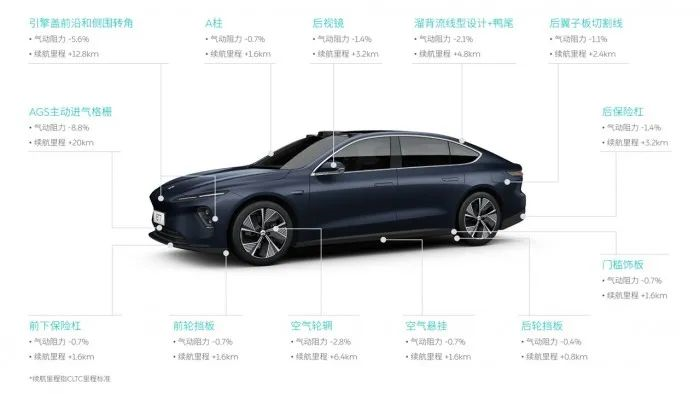
Another detail we need to focus on is the periscope-style lidar on the ET7, which is layouted on the roof to give the lidar better vision and is protruding from the roof, making it a huge challenge for aerodynamics. NIO’s aerodynamic team made full efforts to optimize the lidar, camera angle, curvature on the left and right sides, the top arc, in order to reduce the impact of the lidar on aerodynamic performance.
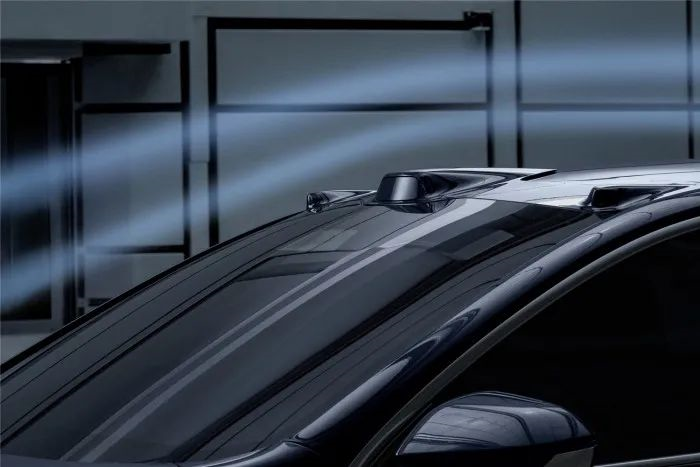
Also, the ET7 series comes standard with AGS active intake grille and air suspension, and the chassis is covered with lightweight skid plates to further enhance aerodynamic performance, achieving a perfect fusion of design and aerodynamic performance.
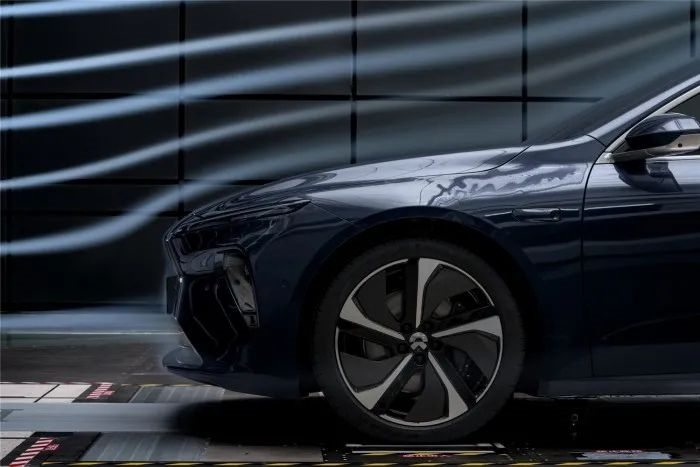
While pursuing low drag, the ET7 also seeks to achieve an optimal overall breakthrough in design, space, and aerodynamics. In fact, more aggressive aerodynamic designs are not impossible to implement, such as increasing the angle of the front windshield and using a lower and slimmer roof, but such designs will definitely sacrifice ride space for users. The frontal area of the ET7 is about 2.57 square meters, even larger than that of flagship sedans like Mercedes-Benz S and BMW 7 Series, ensuring a superior riding experience.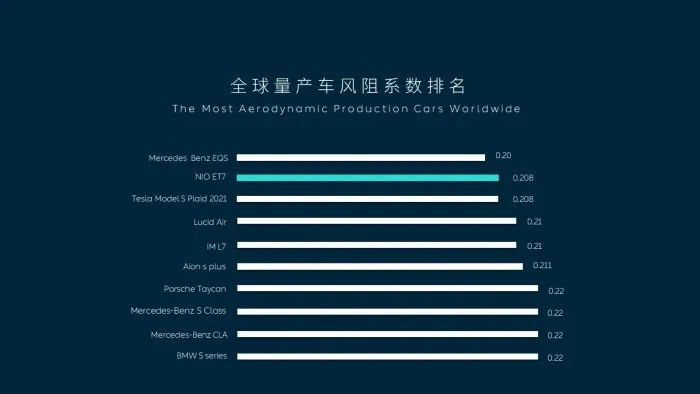
In some details that are easily overlooked, NIO ET7 has also made special treatment. By optimizing the details such as the roundness of the front bumper hood corner, the roundness of the front lower bumper, the roundness of the headlights and fender corners, the curvature of the lower and upper shells of the rearview mirror, the thickness of the handle of the rearview mirror, the curvature and lifting height of the tailgate spoiler, the threshold trim, the front and rear wheel deflectors and other details, NIO ET7 finally achieved a super low drag coefficient of 0.208, ranking second among all production cars in the world.
Breakthrough in high-speed cruising range
The reason why a lower drag coefficient is pursued is because the maximum resistance that needs to be overcome when the vehicle is traveling at high speed comes from the air. For electric vehicles, under the same conditions, a reduction of 0.01 in the drag coefficient can increase the pure electric cruising range by about 5-8 kilometers. Obviously, for NIO ET7 and other pure electric vehicles, lower drag means more excellent cruising performance.
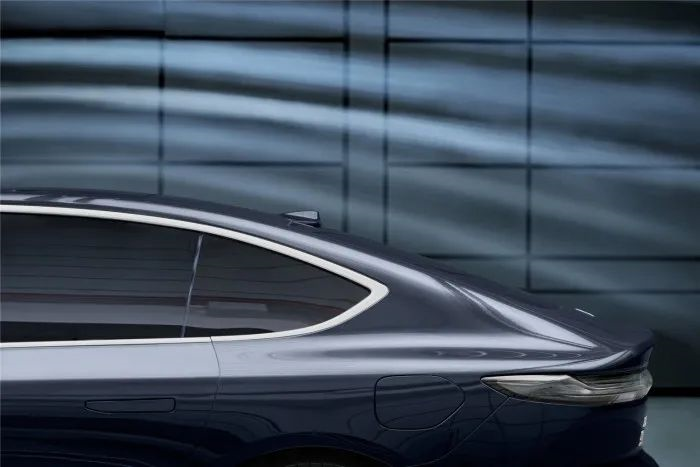
In addition to the cruising range that users care most about, the drag coefficient also affects the acceleration, maximum speed, stability and safety of the vehicle.
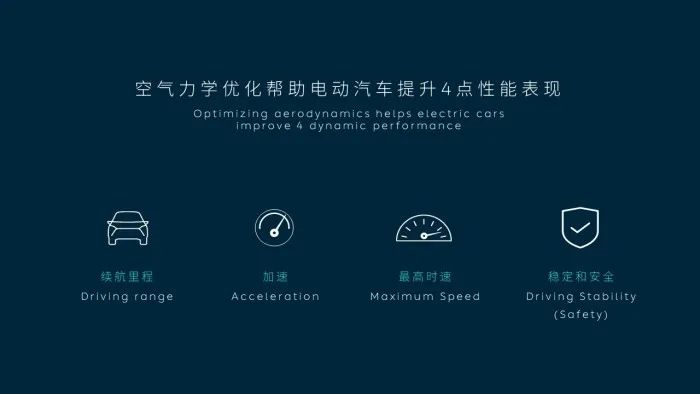
As NIO’s first sedan, ET7 has both high performance of 0-100km acceleration in 3.9 seconds and an ultra-long cruising range of more than 1000 km in comprehensive working conditions, and excellent aerodynamics is the behind-the-scenes hero of outstanding performance. The aerodynamics of NIO ET7 was jointly developed by teams from China, the United States, and Europe. The NIO aerodynamics team spent two years and conducted more than 800 aerodynamic simulation simulations and 120 hours of wind tunnel testing, which can be said to have achieved the ultimate drag coefficient.
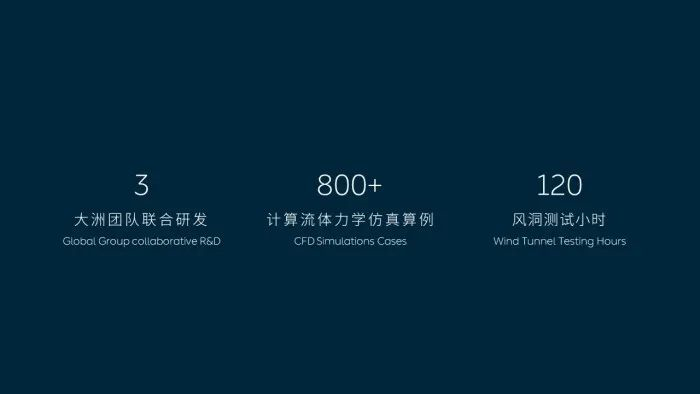
Only by breaking through aerodynamics can we obtain more imagination
The development of intelligent cars is prompting car companies to open up their minds. How to evolve a car from an end-to-end mobile tool into a living space, and even an intelligent mobile device, is a question that every practitioner in the intelligent car industry should think about. In the process of automotive evolution, a key change is inevitable, which is to break through the 2+3 seat layout of traditional car companies and open up the entire space, thereby landing more functions.We often believe that with the development of smart cars, cars will gradually transform from their current shapes into movable boxes. The form of the electric car’s bottom-mounted battery pack and the arrangement of the power unit at both ends can effectively integrate mechanical devices into the chassis without encroaching on the space above. And, the box shape can maximize its spatial advantage, allowing product managers to unleash their imaginations for future smart cars within sufficient space. However, the biggest challenge we face now is how to reduce the drag coefficient.
Apart from achieving the world’s second-best result, NIO ET7 has also demonstrated the ability of car companies to overcome technical difficulties. Factors such as the layout of lidar and the shape of the body are crucial to the drag coefficient, which in turn, is vital to the driving range. Under these interdependent factors, car companies often have to make trade-offs between usability and functionality. However, NIO has kept its outlook-tower-style lidar and the world’s second-best drag coefficient with a “I want them both” attitude.
Conclusion
In the future, whether smart electric cars can achieve an improvement in functionality and completely break the pattern of traditional cars will not only test the imagination of car companies but also require breakthroughs in technology. Aerodynamics is the top priority.
This article is a translation by ChatGPT of a Chinese report from 42HOW. If you have any questions about it, please email bd@42how.com.
